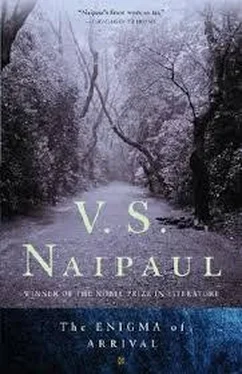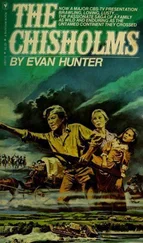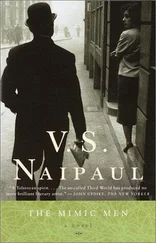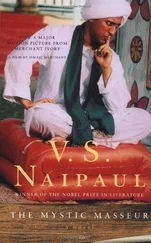V. Naipaul - The Enigma of Arrival
Здесь есть возможность читать онлайн «V. Naipaul - The Enigma of Arrival» весь текст электронной книги совершенно бесплатно (целиком полную версию без сокращений). В некоторых случаях можно слушать аудио, скачать через торрент в формате fb2 и присутствует краткое содержание. Год выпуска: 2012, Издательство: Picador, Жанр: Современная проза, на английском языке. Описание произведения, (предисловие) а так же отзывы посетителей доступны на портале библиотеки ЛибКат.
- Название:The Enigma of Arrival
- Автор:
- Издательство:Picador
- Жанр:
- Год:2012
- ISBN:нет данных
- Рейтинг книги:3 / 5. Голосов: 1
-
Избранное:Добавить в избранное
- Отзывы:
-
Ваша оценка:
- 60
- 1
- 2
- 3
- 4
- 5
The Enigma of Arrival: краткое содержание, описание и аннотация
Предлагаем к чтению аннотацию, описание, краткое содержание или предисловие (зависит от того, что написал сам автор книги «The Enigma of Arrival»). Если вы не нашли необходимую информацию о книге — напишите в комментариях, мы постараемся отыскать её.
The Enigma of Arrival — читать онлайн бесплатно полную книгу (весь текст) целиком
Ниже представлен текст книги, разбитый по страницам. Система сохранения места последней прочитанной страницы, позволяет с удобством читать онлайн бесплатно книгу «The Enigma of Arrival», без необходимости каждый раз заново искать на чём Вы остановились. Поставьте закладку, и сможете в любой момент перейти на страницу, на которой закончили чтение.
Интервал:
Закладка:
The spring came. The new surface of the lane up the hill held. The new life of the farm continued. And for the second year running Jack’s cottage and garden were apart from the activity. His death, his funeral — like the death and funeral of his father-in-law some years before — seemed to have happened secretly: one of the effects of the country life, the dark road, the scattered houses, the big views. His vegetable plot, overrun with weeds, was barely noticeable. His fruit and flower garden grew more wild, the hedge and the rose bushes growing out. His greenhouse at the back (really the front) became empty.
So much that had looked traditional, natural, emanations of the landscape, things that country people did — the planting out of annuals, the tending of the geese, the clipping of the hedge, the pruning of the fruit trees — now turned out not to have been traditional or instinctive after all, but to have been part of Jack’s way. When he wasn’t there to do these things, they weren’t done; there was only a ruin. The new people in the other cottages didn’t do what he had done. They seemed to have little regard for their bit of cottage land. Or they saw it differently, or they had another idea of their lives.
The first year of Jack’s illness Jack’s wife had pretended that nothing had changed; that Jack’s garden was still a garden. Now she didn’t pretend. She was making ready to leave. And she was doing so in a matter-of-fact way. As though, after all, in spite of appearances, in spite of the antique ways of her father, in spite of Jack, little had been invested by her in that cottage, the life attached to it, and those years of the garden.
She now had no connection with the farm or the land. The local council was going to find a house or flat for her on a housing estate in the valley or in one of the nearby towns, Amesbury, Salisbury, Shrewton, Great Wishford, or elsewhere. She would meet more people; she would be nearer the shops. She was looking forward to the move. The “traditional” life, at the bottom of the valley, in the mud and damp around the farm, far from people, where you were shut up for the evening if you didn’t have a car, the traditional life hadn’t been to her taste.
Still, she thought that Jack had had a good life.
She said, “On the Christmas Eve he got up and went to the pub, you know. He knew he was going to die and he knew it was his last chance.”
She spoke quite casually, giving me this news, now more than a year old. She was just making conversation.
She said, “He wanted to be with his friends for the last time.”
To be with his friends; to enjoy the last drink; to have the final sweetness of life as he knew it. What an effort it would have taken! To have those blocks of ice for lungs; to be incapable of getting warm; to be fatigued and faint; to want nothing more than to lie down and close one’s eyes and sail away into the fantasies that were claiming one. And yet he had roused himself and found the energy to dress and had driven to the pub for the holiday, before his death.
Did he drive along the lane up and down the hill beside the windbreak? Or did he, because it required less judgment, drive along the wide, rutted droveway? That way, along the droveway, would have been more likely to get him to the pub and back. But it would have shaken him up dreadfully — as I had seen him, in another mood, shaken up one spring or summer Sunday afternoon, when his shout had been touched with beer. That final trip to the pub served no cause except that of life; yet he made it appear an act of heroism; poetical.
A CROSS THE lawn from my cottage there was a small old flint building. It was covered with ivy, and the ivy was so thick and firm that pigeons roosted in it. The building was square in plan and had a pyramidal roof. This roof appeared to be open at the apex, and above that, on four stilts, was a second, miniature roof of the same pyramidal shape. I was told that the building had been a granary or storehouse and that it was some centuries old. It was not used now; I never saw anyone go into it. It was preserved for its beauty and as something from the past.
Not far from it, and still on the far side of the lawn, was a building that pretended to be a rough old farmhouse. Its walls were made up of bits of brick and stone and flint, the mixture suggesting rubble, peasant pickings. It was about fifty years old and had been put up as one of the ancillary buildings of the manor: a fives court or squash court, but built in this “picturesque” way to suit the setting. Perhaps it had been used as a squash court for some time. But — its “front door” permanently closed, its corrugated-iron roof sagging in places, some of the glass panes of its windows fallen out — it had no function now, had had none for many years. Like the boathouse on the riverbank; like the round, two-story children’s house with the conical thatched roof in the overgrown orchard.
The life of the manor had altered; the organization had shrunk. Needs that had once ramified as if to match the resources and organization of the big house had not been permanent. The manor too had its ruins.
Between granary and mock farmhouse, and beyond the manor wall, was the church. To me in the beginning a church was a church, something built in a particular way, with windows of a particular shape: ideas given me by the Victorian Gothic churches I had seen in Trinidad. But I had that village church before my eyes every day; and quite soon — this new world shaping itself about me in my lucky solitude — I saw that the church was restored and architecturally was as artificial as the farmhouse. Once that was seen, it was seen; the church radiated its own mood, the mood of its Victorian-Edwardian restorers. I saw the church not as “church,” but as part of the wealth and security of Victorian-Edwardian times. It was like the manor to which my cottage was attached; like many of the other big houses around.
The church stood on a pre-medieval site; that was what was said. But little about the church as it now was had come down from that time. Not a piece of flint; not a slab of dressed stone that framed the Gothic windows. And perhaps not even the faith was old.
Just as it was hard to imagine the lives and religious impulses of the people who had with immense labor turned this plain into a burial ground and preserved its sanctity for centuries, so it was hard, though one stood on the very ground and was exposed to the same weather (but not now the same dawns or sunsets: always the vapor trails of aircraft), to enter into the spirit, the terrors and the need for redemption, of the people who had worshiped a thousand years before in the first Christian church on this site — that lay so close to me, just across the lawn and beyond the play farmhouse.
Play farmhouse, renovated church. Had that been a kind of play, too, the religion of the renovated church? Did the renovators share the old terrors? Or was this faith something quite different, something touched with the sense of history, the assurance of continuity, the sense of something owed to oneself?
When you looked down on the plain from the viewing point in the windbreak on the hill, you could see Stonehenge to the west and the beginnings of the town of Amesbury to the east. The River Avon ran through Amesbury. There were chapels and abbeys here too, beside the river, wide and shallow at this point. Amesbury — now a military town, with little modern houses and shops and garages — was an old place. It was to a nunnery in Amesbury that Guinevere, Arthur’s queen, the lover of Lancelot, had retired when the Round Table had vanished from Camelot, all of twenty miles away at Winchester. A sign on the road from Stonehenge, just before you entered Amesbury, celebrated the antiquity of the town: with a coat of arms and a date, A.D. 979.
Читать дальшеИнтервал:
Закладка:
Похожие книги на «The Enigma of Arrival»
Представляем Вашему вниманию похожие книги на «The Enigma of Arrival» списком для выбора. Мы отобрали схожую по названию и смыслу литературу в надежде предоставить читателям больше вариантов отыскать новые, интересные, ещё непрочитанные произведения.
Обсуждение, отзывы о книге «The Enigma of Arrival» и просто собственные мнения читателей. Оставьте ваши комментарии, напишите, что Вы думаете о произведении, его смысле или главных героях. Укажите что конкретно понравилось, а что нет, и почему Вы так считаете.












